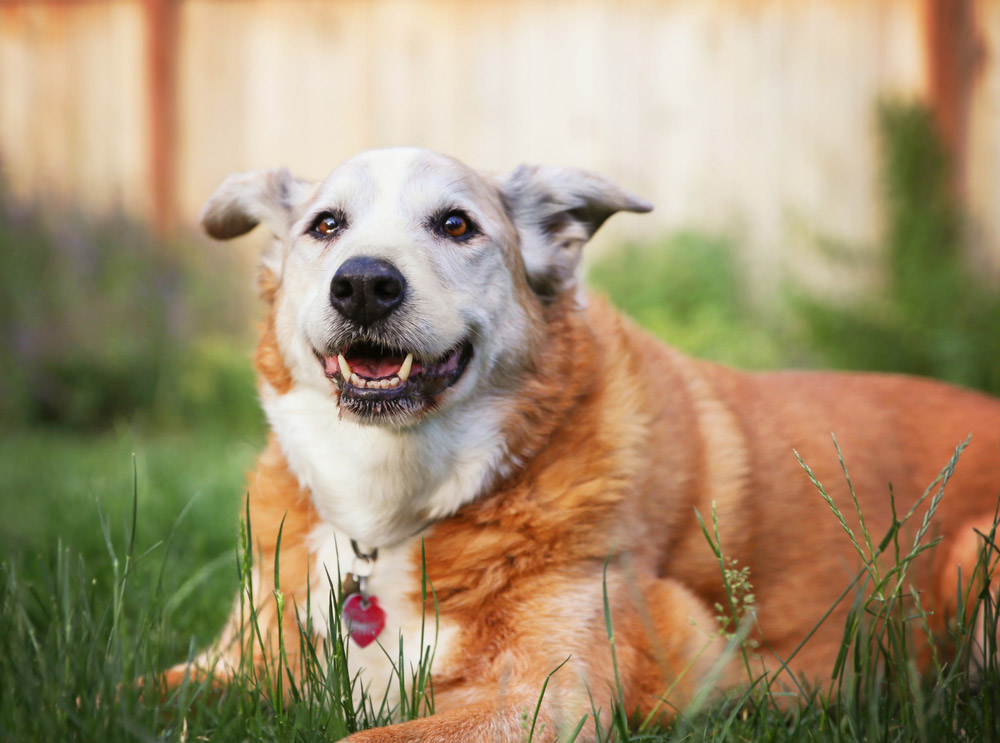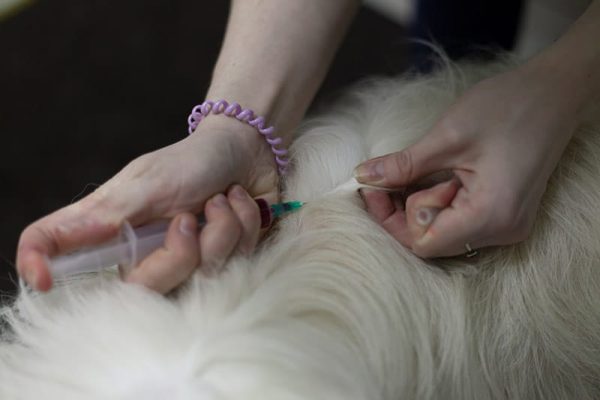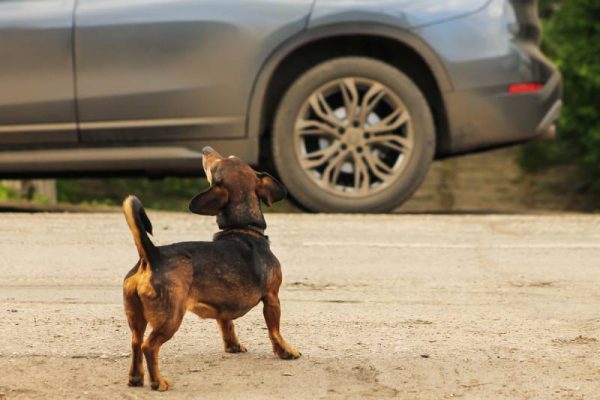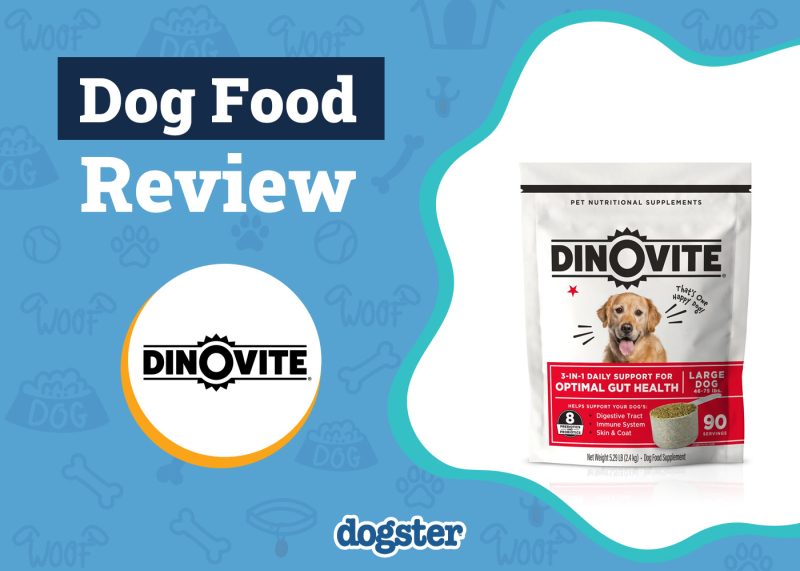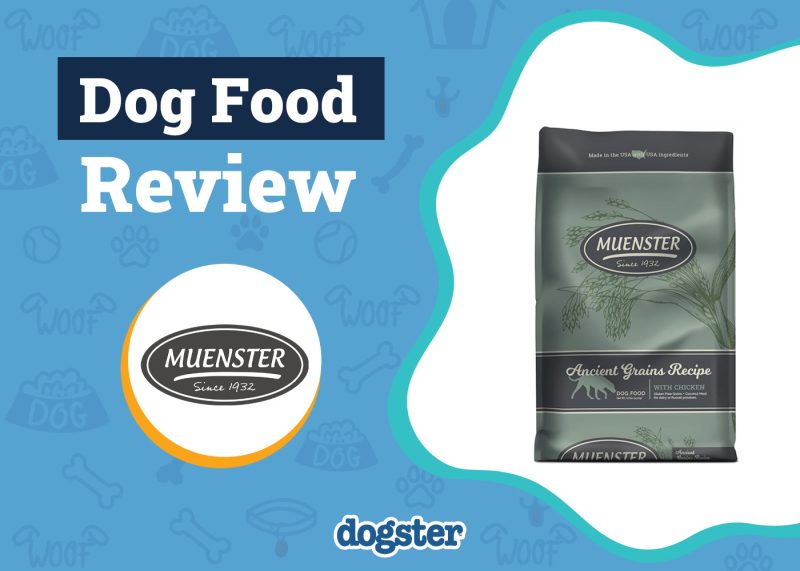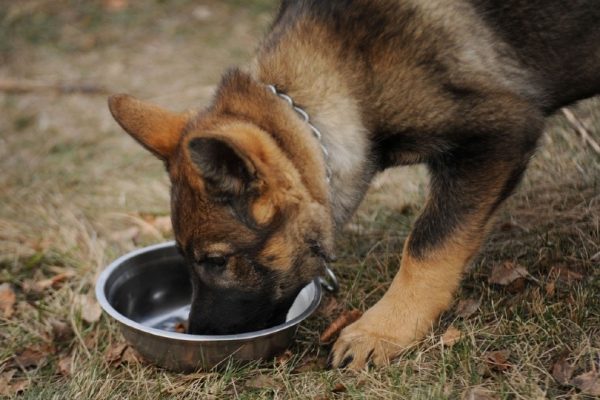This article has been reviewed by a qualified veterinarian using information available at the time of review. The knowledge of canine medicine is continually evolving. This article is not intended to replace consultation with a veterinarian for your specific pet. It does not take into account your pet’s unique circumstances.
Dogs age at different paces (this is dependent on breed and size—large breeds generally age faster) and some keep their young looks and puppy-like personalities well into adulthood, which can sometimes make it hard to tell when a dog is entering their senior years.
Your old boy or girl will go through a number of both physical and mental changes as they get older, and this guide is all about signs of aging to look for. We’ll also share some tips on how to keep your aging dog as healthy and happy as possible.
Physical Signs of Aging in Dogs
1. Mobility Issues
Some aging dogs experience mobility issues like struggling to get up and down the stairs or jumping up on furniture. This can be caused by health conditions related to the joints, like canine arthritis.
In addition to mobility issues, signs of arthritis include stiffness, lameness, lower energy levels, walking more slowly, difficulty getting up and down, uncharacteristic aggression, and reluctance to be touched in certain areas due to pain. Please speak to a vet if you suspect arthritis or another joint issue.
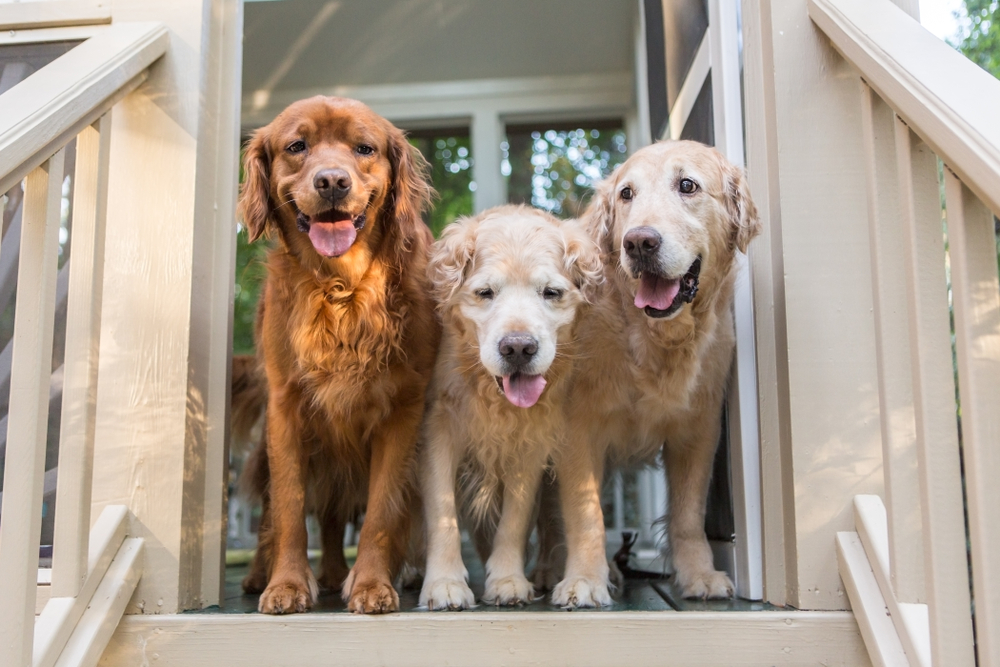
2. Weight Changes
Some senior dogs put on weight because they’re less active than they used to be, whereas others lose weight due to factors like reduced appetite, reduced muscle mass, digestive problems, or nutrient absorption issues. A vet can help you come up with a healthy weight management plan for your overweight or underweight senior pooch.
Did you know you can speak to a veterinarian without having to travel? Just head over to PangoVet. It's an online service where you can talk to a vet online and get the advice you need for your pet — all at an affordable price!

3. Bad Breath
Aging dogs experiencing dental issues like infections, periodontal disease, or gingivitis often have foul-smelling breath. Avoid dismissing these things as mere signs of aging—dental issues can cause serious discomfort for your dog, so it’s best to have bad breath checked out by a vet.
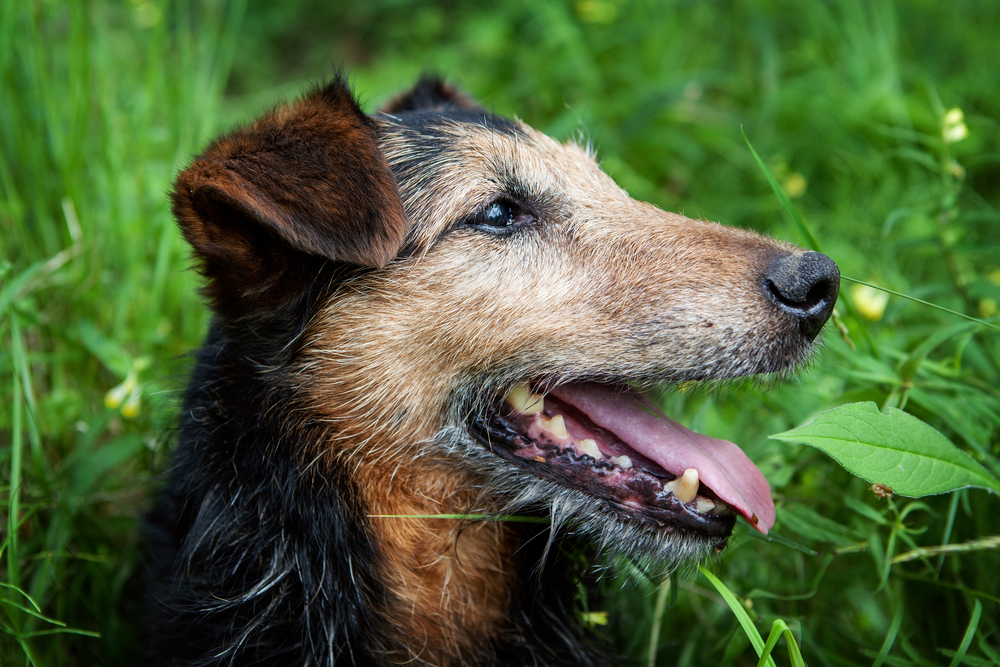
4. Bathroom Habit Changes
Changes in bathroom habits could include difficulty urinating or defecating or forgetting toilet training. This is fairly common in older dogs, but sometimes, underlying conditions like kidney disease, urinary tract infections, and neurological conditions can be behind it.
5. Eye Clouding & Vision Problems
It’s common for older dogs’ eyes to take on an opaque, cloudy look. This isn’t always caused by anything serious, and it doesn’t necessarily mean a dog is blind, but some cases are caused by conditions like cataracts.
Unfortunately, some dogs experiencing eye conditions lose the capacity to see well, so you may spot them looking lost or bumping into things more often.

6. Lumps & Bumps
Some dogs get a little lumpy as they age. These can be simple fatty lumps that are benign, but they can also be caused by tumors or other conditions, so it’s wise to get them looked at by a vet.
7. Graying
You may notice some graying around your dog’s face, eyes, and muzzle when they’re becoming a senior. That said, some young dogs experience graying due to genetics, stress, and conditions like vitiligo (rare), hypothyroidism, kidney disease, and liver disease, so graying isn’t always necessarily a sign of getting old. Graying will be more obvious on dark-haired dogs.

Behavioral Signs of Aging in Dogs
8. Decreased Energy Levels
Dogs tend to gradually slow down as they start to get older, so you may notice that your faithful friend isn’t as fast, playful, or active as they once were. They may spend more time snoozing and less time chasing a ball than they used to. Walks may slow down to a gentle plod rather than your dog wanting to run off and investigate every new smell and sight or greet other dogs.
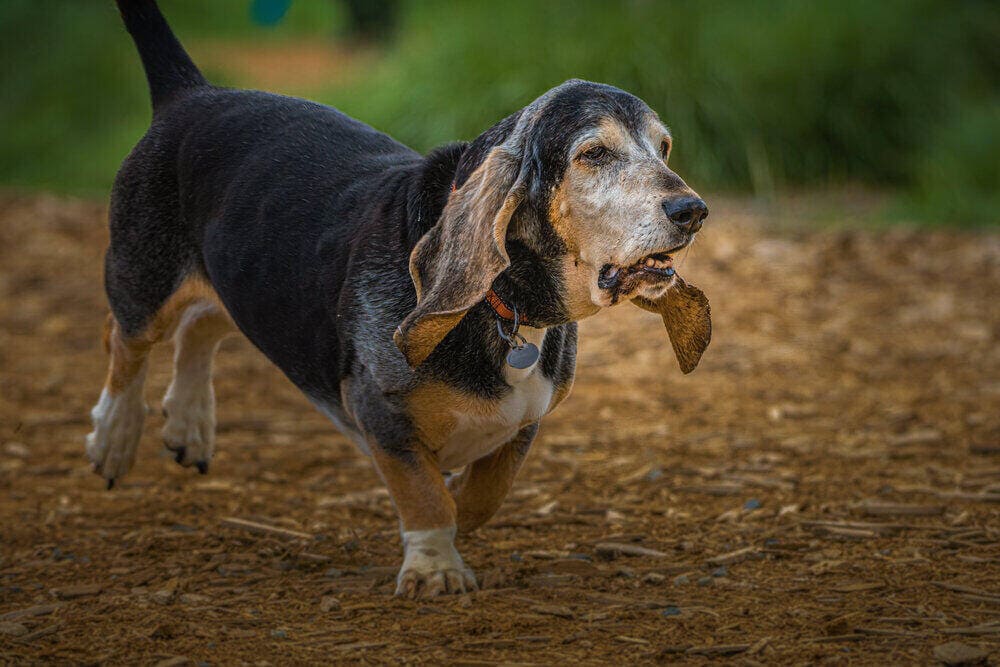
9. Irritability
If an older dog is experiencing pain from a health condition or cognitive decline, they may become uncharacteristically grumpy and irritable. For example, if they once loved to play with your other dog but have recently started growling at the other dog when they try to initiate play, this is a sign that they’re just not feeling up to it anymore.
10. Sleep Changes
Your dog’s snooze time may be affected if they’re experiencing cognitive decline or a painful condition like arthritis. While painful conditions can prevent a dog from sleeping and cause restlessness at night, cognitive decline can cause the dog to get confused and mix up day and night.
As a result, the dog may be awake throughout the night but sleep during the day.

11. Confusion & Forgetfulness
As we touched on above, some dogs get more easily confused as they age due to a decline in their cognitive faculties.
- Forgetting how to follow commands
- Being disoriented and seeming “lost”
- Forgetting walking routes
- Forgetting where things are in the house
- Sleep cycle changes
- Vocalizing more than usual
- Failing to recognize familiar people
- Pacing
- Staring at walls with a blank expression
12. Anxiety & Fear
In addition to all the signs of cognitive decline mentioned above, older dogs may also experience heightened anxiety and fear. This probably happens because the dog doesn’t understand what’s going on; being unable to recognize familiar routines, places, things, people, and other animal companions is incredibly stressful to dogs.
Signs of anxiety include:
- Panting
- Trembling
- Irritability
- Soiling in the house
- Depression
- Clinginess
- Reduced appetite
- Excessive vocalization

How to Support an Aging Dog
It’s common for aging dogs to experience health issues and behavioral changes, but there are some steps you can take to reduce their stress and make them more comfortable. Here are some top tips:
See a Vet
Most important of all, it’s essential to have your aging dog checked out by a vet so they can diagnose any underlying health issues, prescribe treatment if necessary, and give you advice on how to care for your dog during this period.
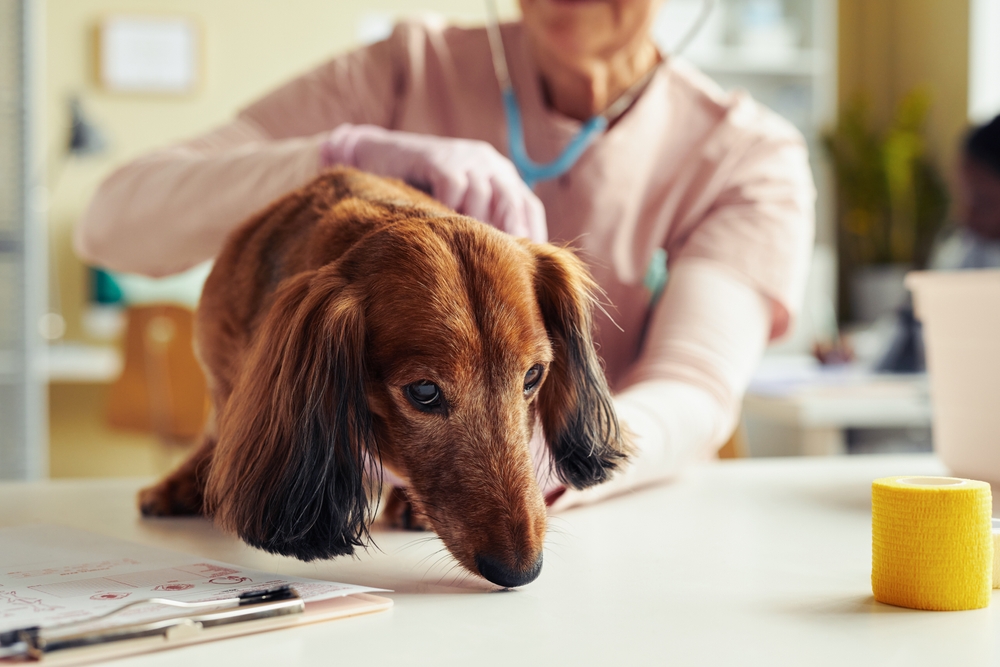
Be Attentive
Older dogs often aren’t as sprightly as they once were. Being attentive to your dog’s new boundaries and needs, like how long they can walk or play for, grooming them more often when they’re struggling to do it themselves, and keeping up with their maintenance routines like toothbrushing and nail trims can really help them keep a sense of routine and feel more comfortable.
Consider Diet
Your dog’s dietary needs may change as they get older due to digestive problems or other health issues. You might need to adapt your dog’s diet to manage this, so speak to a vet to ascertain whether or not a special prescription diet could help.

Mentally Stimulate Your Dog
Even though your dog may not be able to walk or play for as long as they did before, they still have a need for mental stimulation to keep their brain sharp. This can even help slow the progression of cognitive dysfunction. Offer interactive toys like puzzle feeders or do some basic training sessions—anything to keep your dog’s mind as active as possible.
Take Your Dog for Walks
It’s okay if your dog can’t run or walk for long stretches anymore. As long as they can still walk, light, gentle strolls are still good for them and allow for both physical and mental stimulation.
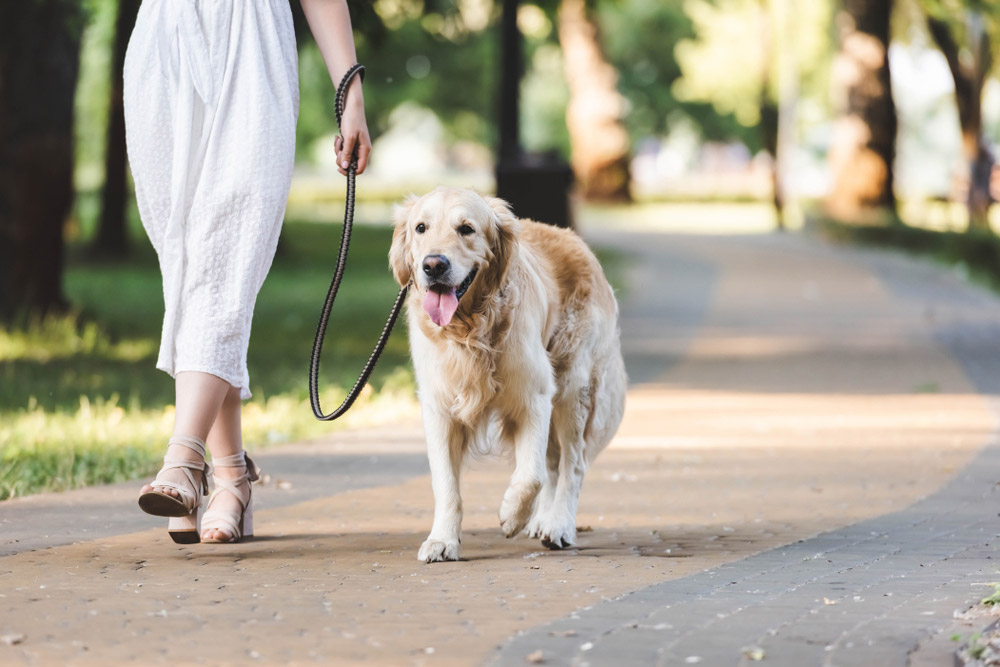
Adapt Your Home
If your dog is starting to get lost around the house due to cognitive decline or vision problems, adapt your home to make things easier for them. This could include checking for potential hazards, keeping everything in the same place, installing night lights, putting down puppy pads if there are bathroom issues, and offering a special orthopedic bed for extra comfort if need be.
Stick to a Routine
Sticking to a routine gives your dog a sense of comfort and familiarity, and this goes a long way toward reducing their stress levels. Make sure your dog gets up, goes to bed, eats, and walks at the same time every day, and try to always keep things like furniture and food and water bowls in the same place to avoid extra confusion.

Conclusion
It can be emotionally very difficult when we see our dogs start to age, but if the dog parent liaises with a vet, is thoughtful when it comes to changes in the dog’s needs, and provides lots of love and attention, many dogs enjoy several happy and comfortable senior years.
Please don’t hesitate to reach out to a vet if you have concerns about your senior dog.
Also see:
- How Old Is 13 in Dog Years? Vet-Approved Guide to Each Size of Dog
- How to Tell a Dog’s Age: Our Vet Explains 5 Ways
Featured Image Credit: Annette Shaff, Shutterstock
